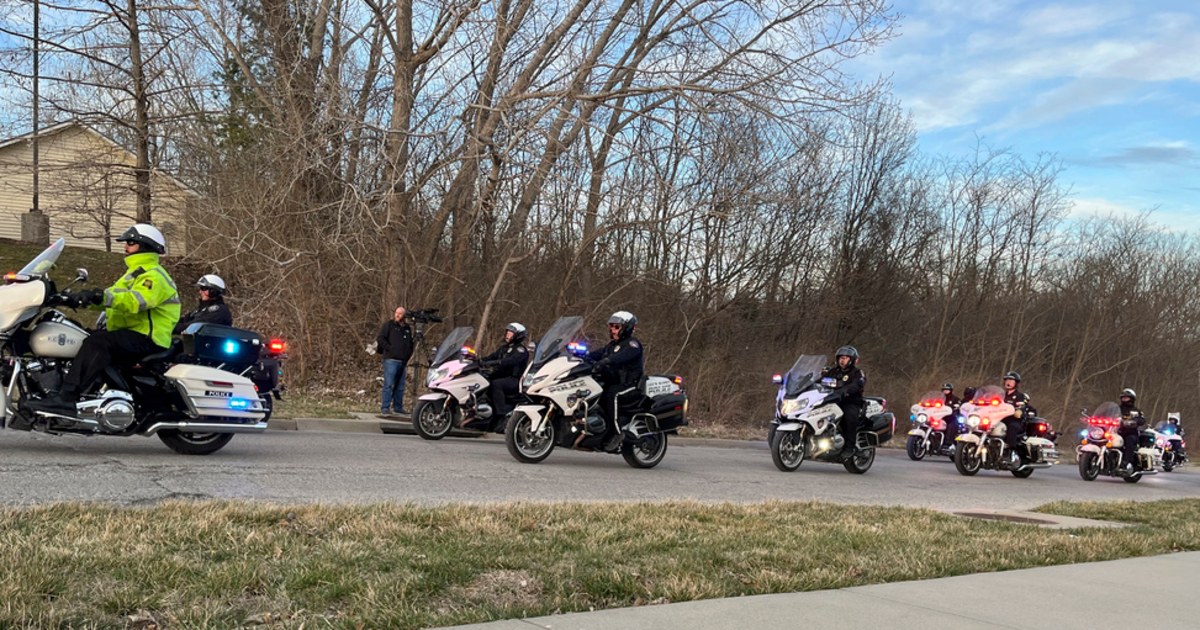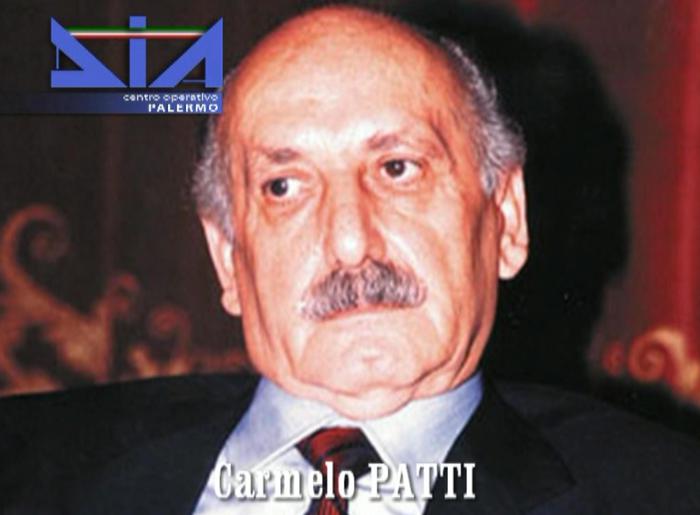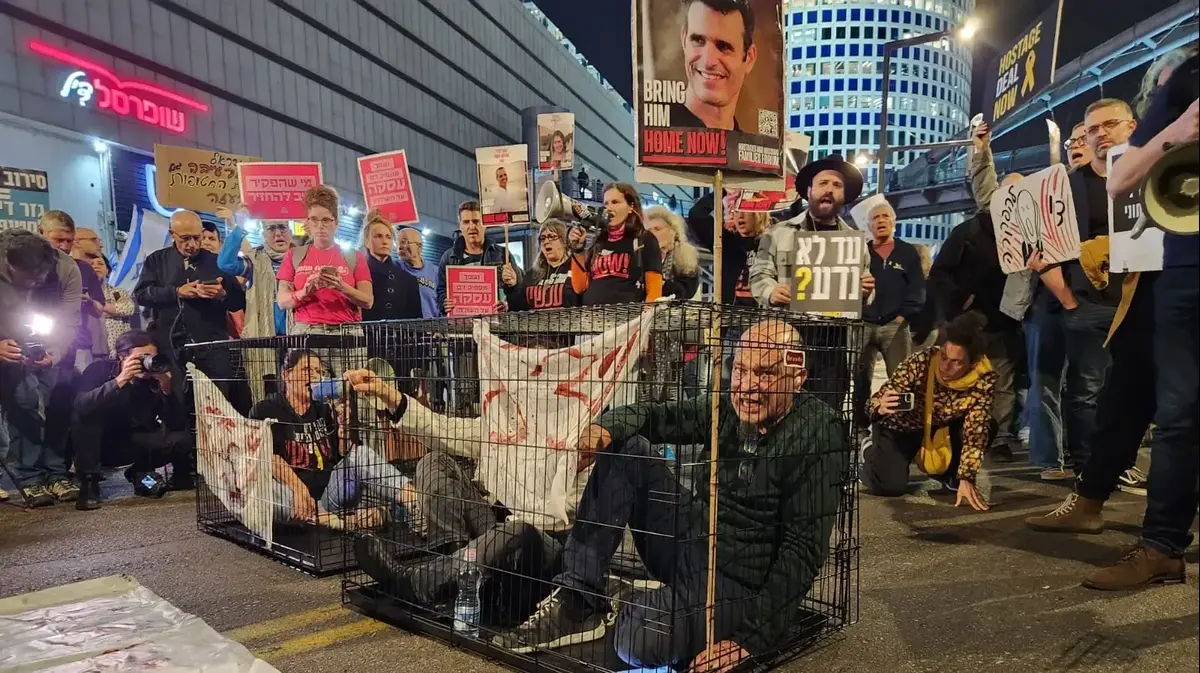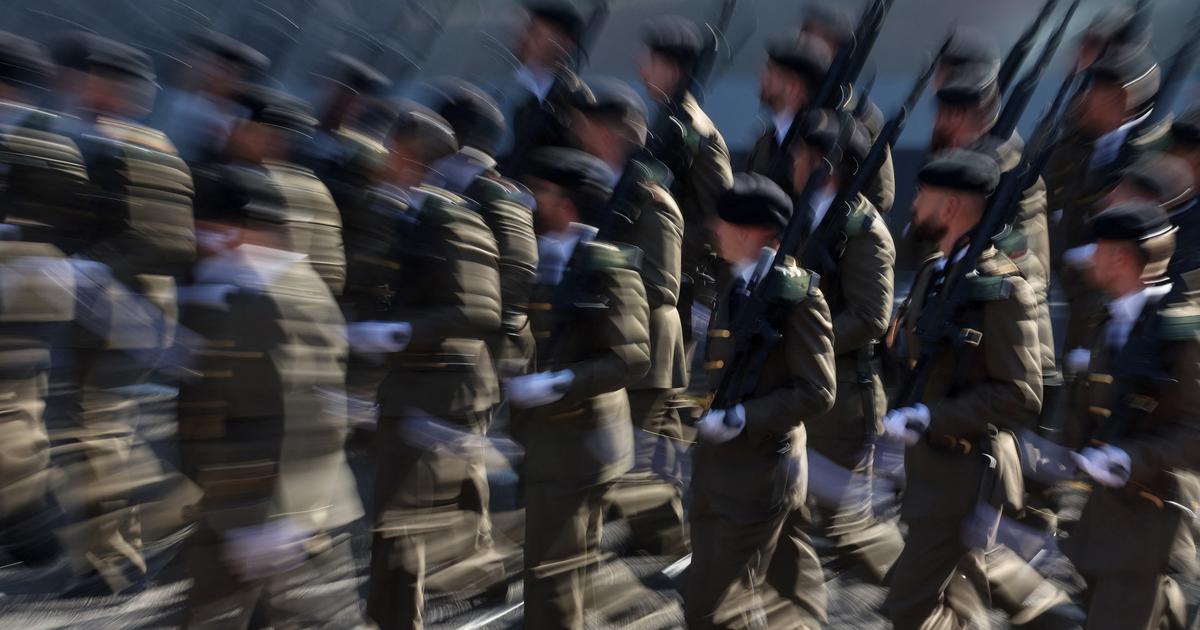End of April 2022. Grave number 86 of barracks 21 of the Riotinto cemetery (Huelva).
The team led by archaeologist Andrés Fernández locates, next to the remains of a victim of the Civil War, the button on a lapel and one of the three on the left sleeve of a Civil Guard uniform.
The pulse of the technicians begins to accelerate and runs wild when they find a three-cornered hat in very bad condition at their feet.
The signs are clear.
This is Corporal Luis Ortega Godoy, better known as Corporal Godoy, the first to be shot by the rebel troops in the town of the Huelva mining basin for fulfilling his duty and remaining loyal to the Government of the Second Republic, refusing the mandate of Queipo de Plain that all the Andalusian barracks lay down their arms.
Portrait of Luis Ortega Godoy.
He was executed on August 26, 1936. 86 years later, two of his grandchildren, Luis Méndez Ortega and María Itatí Palacio Ortega, were found with his remains this Monday in an exhumation ceremony in which the director of the Civil Guard was present. , María Gámez, and the Secretary of State for Democratic Memory, Fernando Martínez.
An act that served to begin to heal the pain of a long and broken family, and to repair the honor of a hero, whose death plunged his widow and her seven children into a spiral of "humiliation, hunger and extreme poverty", as Itati recounts.
"Having found it is wonderful, it is a dream come true," explains his granddaughter from Murcia, where he lives, one day after the emotional reunion with his grandfather.
Her Argentine accent betrays a life marked by exile, one of the many consequences of Corporal Godoy's execution.
“He has been very present in our family.
Our grandmother Magdalena always told us about him as what he was, a hero.
Her children never blamed her for what happened to them later, ”she abounds.
Technicians working in one of the graves of the Ríotinto cemetery (Huelva).
photo.ALEJANDRO RUESGAAlejandro Ruesga
Because after the military uprising, Corporal Godoy, stationed at the Alto de la Mesa post, trained the Rio Tinto miners who volunteered to stop the advance of the rebels.
At the head of half a thousand of these miner militiamen, the civil guard confronted the Francoist troops on August 7 in El Empalme, near Valverde del Camino.
Later he returned to the barracks and from there they took him out to shoot him.
The ABC newspaper
of Seville
gave a version of his execution on August 29, 1936. “Tall, fat, with glasses, he was induced by reading certain bourgeois newspapers at the service of Marxism, which, however, despised them.
When there was news in the Mining Basin of the arrival of the military forces, some leaders, like Molina, fled... But Corporal Godoy, encouraging some hope of forgiveness, got into bed, feigning illness.
Thus he was arrested.
And until the last moment he encouraged hope of salvation
…
He did not face the platoon, nor did he turn his back.
From the side, looking toward Nerva's side, he listened to the commander's brief harangue, who accused him of being a traitor to his brothers and to the Homeland.
Charge up!
Fire!
They were the voices that were given almost at the same time.
“It is not true that he hid in bed.
He was dressed and buttoned from top to bottom and wearing his three-cornered hat.
He waited for them dressed, as they buried him.
As he has been able to see in the exhumation, ”says Iratí.
Corporal Godoy was 44 years old and left behind a 36-year-old widow and seven children, the youngest, Enrique, one year old.
"They forced my grandmother to drink castor oil, they lowered her panties, they lifted her skirts and they gave her a walk," her granddaughter says through tears.
Luis, the eldest of his sons, was mock executed and then taken to a concentration camp.
That is why the photo that Magdalena took with the rest of her children in Casablanca (Morocco), where they took refuge, is missing.
Some of Corporal Godoy's sons got married there.
Pepita, the eldest, left Corsica,
where Luis Mendez was born.
Four others, including Rosario, Itatí's mother, went to Argentina.
"My family is a puzzle, all disassembled, and finding my grandfather is the piece that unites everything," Luis acknowledged during the ceremony.
The value of the gravedigger
María Itatí Palacio observes the remains of her grandfather, Luis Ortega Godoy.Alejandro Ruesga
The
ABC
recorded the execution of his grandfather, but the family did not know where he was buried.
The three grandchildren who returned to Spain began to search more seriously when the memorial movement took off.
“I got in touch with the Civil Guard to get my grandmother a widow's pension, but we didn't have a death certificate,” says Itatí.
The investigation led them to the book
Memoria Vindicada 1936-1939
,
about those shot in the mining region of Huelva, written by two of their neighbors, Alfredo Moreno and Gilberto Hernández.
It contains the annotations made by the gravedigger of the Riotinto cemetery in which he wrote the initials CG, the date of the execution and where he was buried.
“Corporal Godoy was known by those initials and they are the ones used in the summary of the disarmament of the barracks in the mining basin, where he appears as one of the defenders who has already died,” Moreno recounts.
"If it hadn't been for the courage of the gravedigger, we wouldn't have found Corporal Godoy," he explains excitedly.
Fernandez's team works with his exhaustive documentation work in the first phase of the Riotinto exhumations.
The crossing of data from Moreno and Hernández determines that up to 211 victims of reprisals could be buried in the cemetery.
"With the gravedigger's notes, up to 10 more could be identified," says the researcher, a retired mine worker, like his colleague.
“If our investigations have served for a family to find their grandfather, for justice to be done, everything else falls apart”, he says.
Corporal Godoy was the first to be executed in Riotinto and the first of those exhumed —three so far— to be identified.
When the exhumation work began, on March 24 of this year, Moreno says that he told one of the archaeologists that he had to remove a three-cornered hat from the pit because he had dreamed it while writing the book.
“Your dream has come true,” Fernández told him when he called him at the end of April, after recovering the hat.
"The most rewarding thing about this job is responding to families," says the archaeologist.
"The feeling when we located the signs that pointed to Cape Godoy is indescribable," he abounds.
Rosario, Itatí's mother, was the youngest of Corporal Godoy's daughters and was three years old when he was shot.
She was also the last to die.
She did it six months ago, at the age of 88 —almost coinciding with the work of tasting the cemetery—.
“In 2006 she was with her sister Pepita next to the monolith of the Riotinto cemetery that remembers those who were shot.
They did not know that her father was 20 meters away, ”says her daughter.
“We arrived late,” laments Fernández, but Itatí knows that, 86 years later, the least important thing is when.
What she says is that the violated honor of her grandfather has been restored and that the pieces of the family puzzle that her murder disrupted are beginning to come together.
"My grandfather will rest in the Marbella cemetery, where my grandmother is buried," she says.
One of the largest rural pits in Spain
It is not the first time that the archaeologist Andrés Fernández has found civil guards in Francoist graves, but in the case of Corporal Godoy it is the first time that the Civil Guard badges are not torn off.
"It's a token of some recognition," he explains.
His body is also in a better disposition than the rest of those who have been exhumed, two of them on the corpse of Luis Ortega, which corroborates the suspicions that he was the first to be shot in Riotinto.
The rest of the nine that they have located have signs of violence - some with shots in the back - and have been buried in quicklime.
Rio Tinto is one of the largest rural graves of the Franco regime in Spain – “the second after Nerva”, Fernández points out.
The tasting work began in May of last year.
The first phase of the exhumation tasks - at a cost of 50,000 euros financed exclusively by the Government of Spain - is scheduled to end in June (there are five phases corresponding to the five ditches or graves that have been indicated).
Fernández's team, made up of two archaeologists and a forensic anthropologist, calculates that they will recover between 40 and 50 bodies.
Exclusive content for subscribers
read without limits
subscribe
I'm already a subscriber















